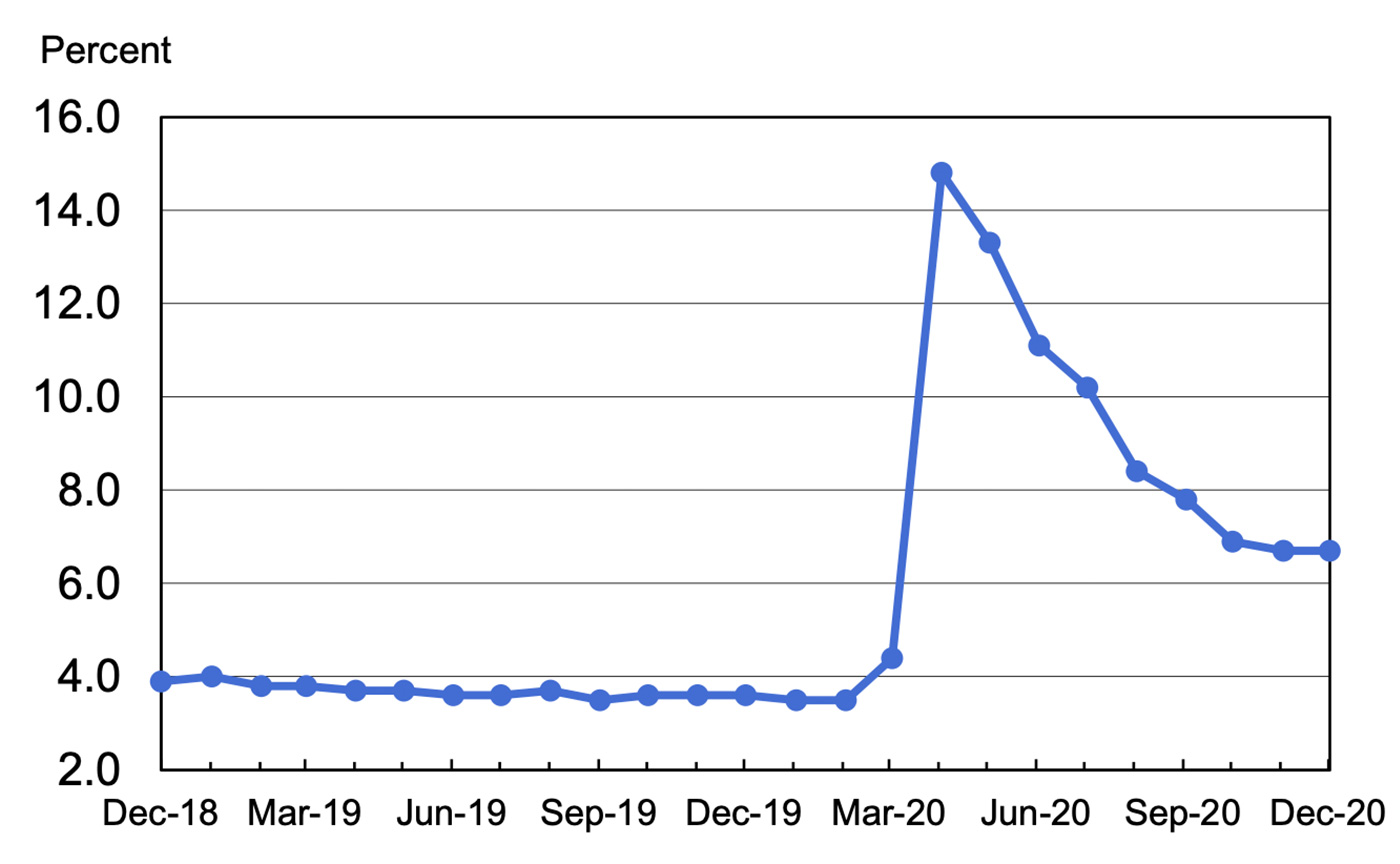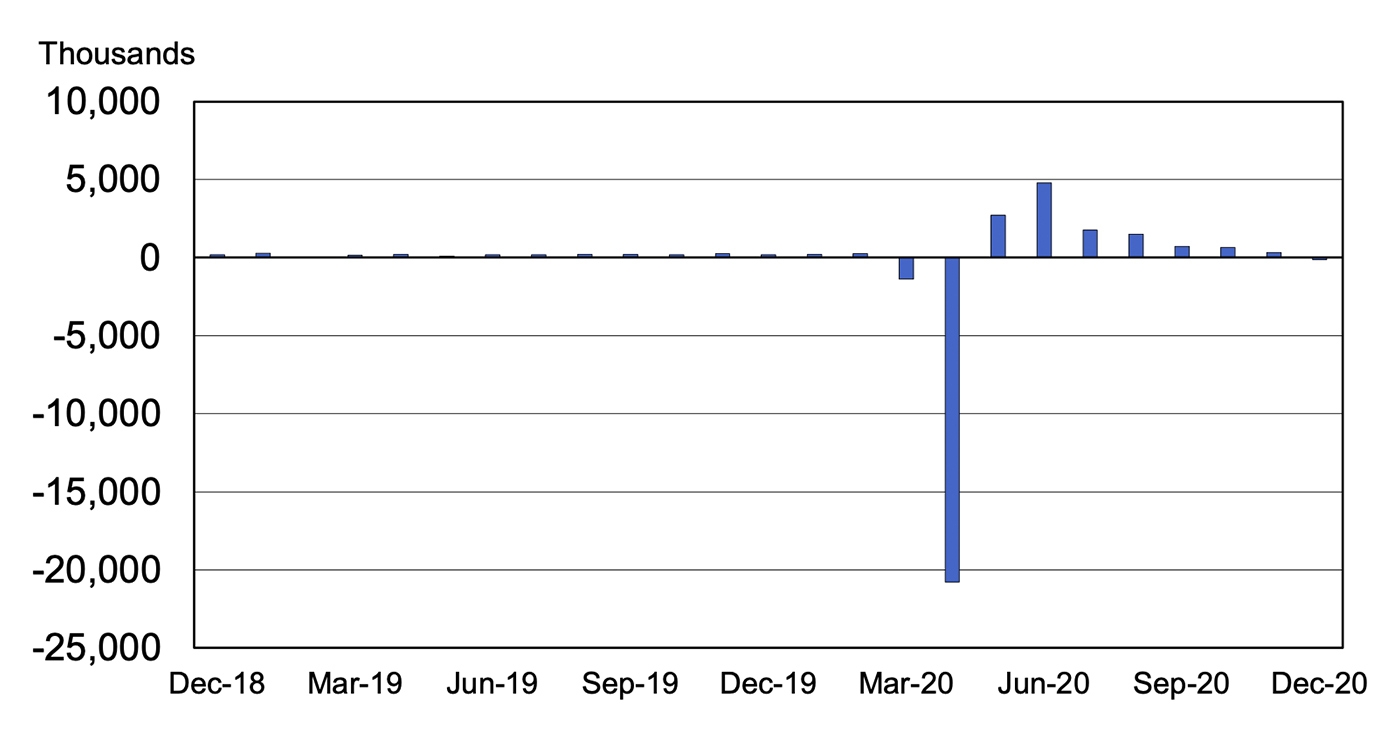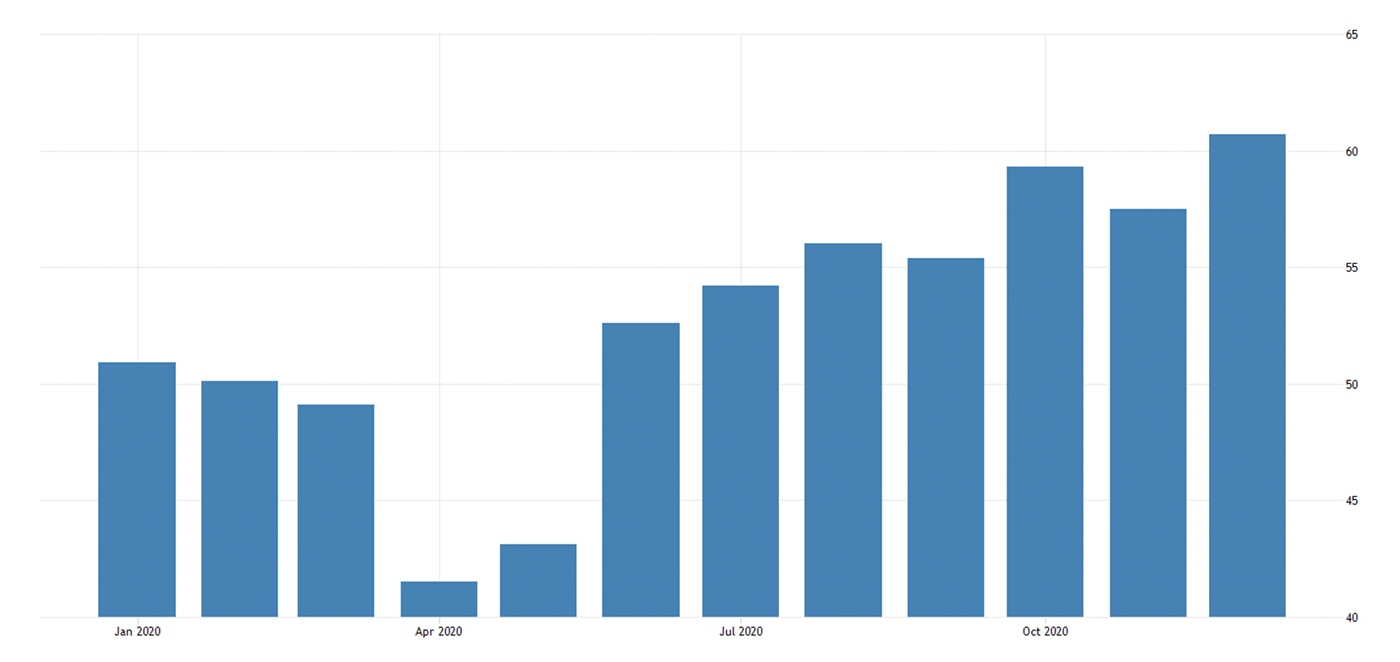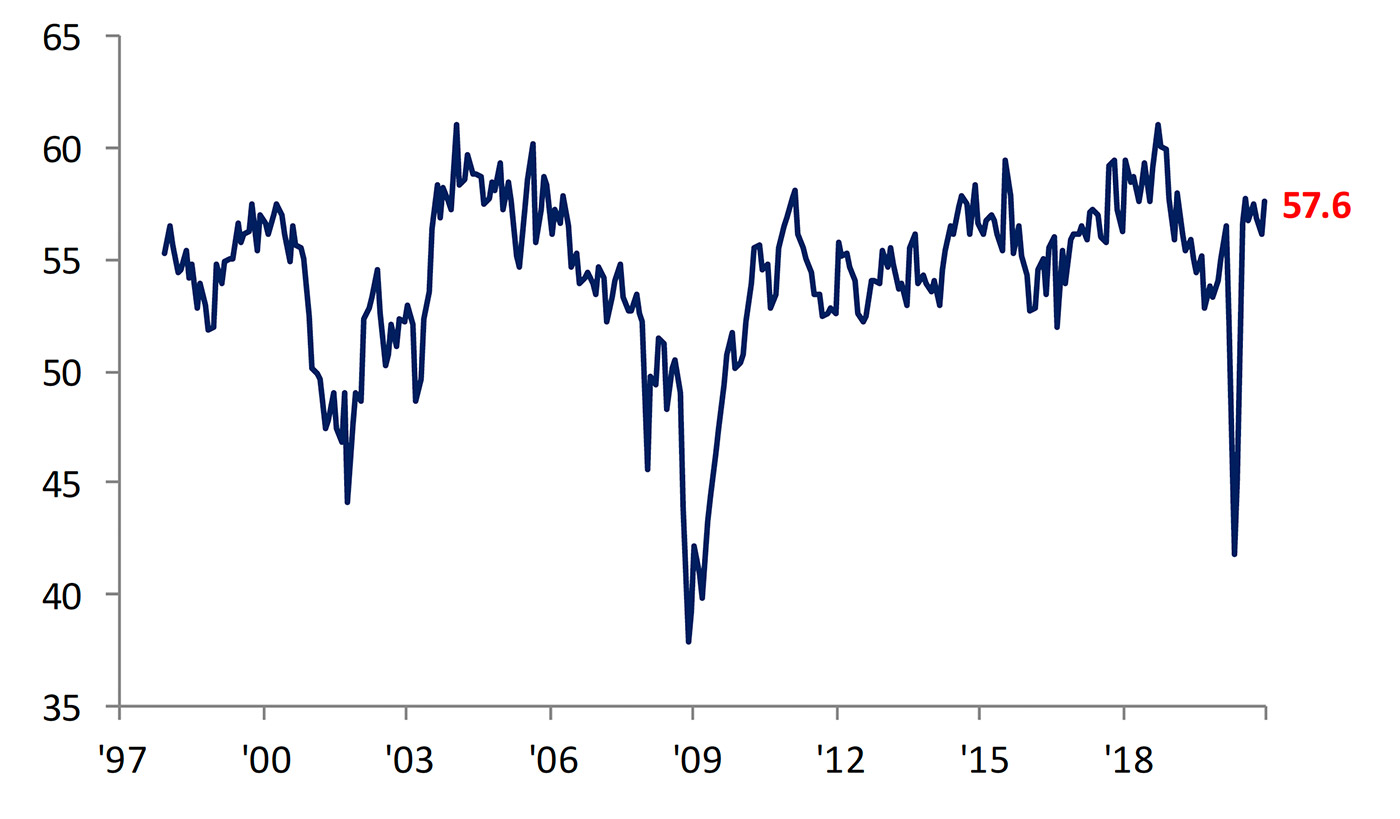
Against the backdrop of rising COVID cases, hospitalizations, and deaths, as well as a tumultuous political environment, two major economic reports were released last week.
MarketWatch reported, “The U.S. lost jobs in December for the first time in eight months as the coronavirus bore down on the economy again and forced businesses to resort to more layoffs.”
In contrast, the Institute for Supply Management (ISM) released its latest report on the manufacturing sector, where they noted, “The manufacturing economy continued its recovery in December.”
The Bureau of Labor Statistics released the December 2020 employment report on Friday, Jan. 8. The BLS said as a broad overview,

Source: Bureau of Labor Statistics

Source: Bureau of Labor Statistics
Despite some disappointing headline numbers, with an actual reported monthly jobs loss versus estimates for a small gain, Bespoke Investment Group still found several encouraging signs in the jobs report:
- “… There were positives under the surface: excluding COVID-hit sectors (Leisure/Hospitality and Educational Services) payrolls rose at the fastest [month-over-month] pace since August, indicating that the latest virus surge is not broadly hurting the economy insulated from COVID.
- “The prime-age employment-population ratio rose after pausing in November and hit new post-March highs; it’s recovered just shy of two-thirds of its total drop.
“Wages are also holding up well … job losses being concentrated in lower-wage sectors. - “Bottom line, the labor market is handling things pretty well even if the total degree of labor market slack as measured by the total universe of workers who want to work or work more is still where it was in early 2014.”
“The December Manufacturing PMI registered 60.7 percent, up 3.2 percentage points from the November reading of 57.5 percent. This figure indicates expansion in the overall economy for the eighth month in a row after contracting in March, April, and May, which ended a period of 131 consecutive months of growth. …
“Survey Committee members reported that their companies and suppliers continue to operate in reconfigured factories, but absenteeism, short-term shutdowns to sanitize facilities and difficulties in returning and hiring workers are causing strains that are limiting manufacturing growth potential. However, panel sentiment remains optimistic (three positive comments for every cautious comment), an improvement compared to November. …
“All six of the biggest manufacturing industries—Fabricated Metal Products; Computer & Electronic Products; Transportation Equipment; Chemical Products; Petroleum & Coal Products; and Food, Beverage & Tobacco Products—registered moderate to strong growth in December.”

Source: Trading Economics, Institute for Supply Management
“… The December ISM Manufacturing report showed an expansionary reading for the seventh month in a row and the highest level since August 2018. Prior to that, you would need to go all the way back to January and May of 2004 to find readings as high as December.
“The ISM Services report similarly experienced an uptick in December, though unlike manufacturing, that growth is not even at the same pace it was just a few months ago. Whereas nearly every component of the manufacturing report rose in December, the details of the services report were more mixed.
“Put together, the increases in the headline number [for Manufacturing and Services] led the composite reading to rise to the highest level since July.”

Source: Bespoke Investment Group, Institute for Supply Management
